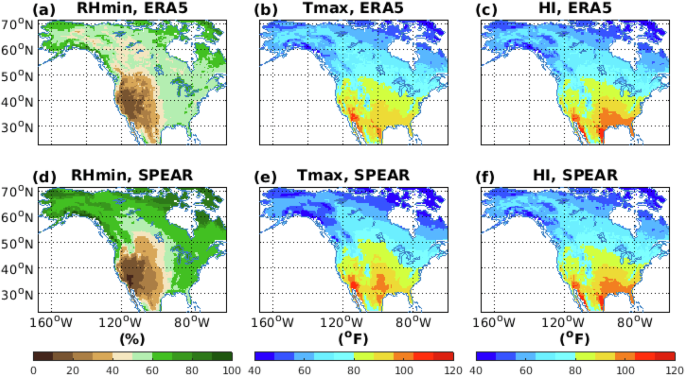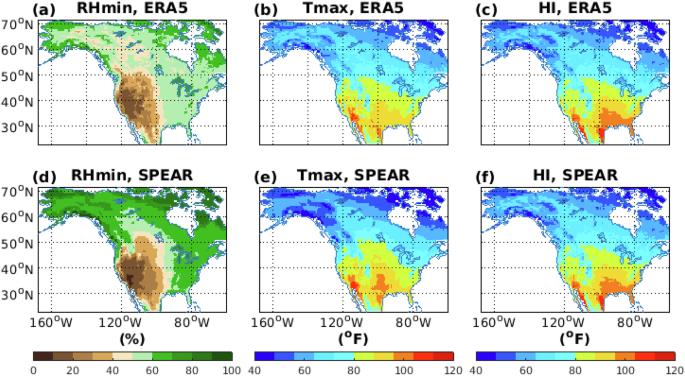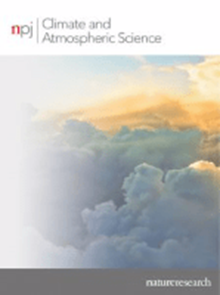由海面温度驱动的美国东南部夏季复合湿热极端天气的季节性预测
IF 8.5
1区 地球科学
Q1 METEOROLOGY & ATMOSPHERIC SCIENCES
引用次数: 0
摘要
湿热极端天气(HHE)是一种复合极端天气事件,对人类健康构成严重威胁。提前数月对湿热极端天气进行娴熟的预报,对于制定战略以提高社区应对极端事件的能力至关重要1,2。本研究表明,利用 SPEAR(预测和地球系统研究无缝系统)季节预报系统,可以提前 0-1 个月熟练预测美国东南部(SEUS)夏季 HHE 的频率。热带北大西洋 (TNA) 盆地的海面温度 (SST) 被认为是这种预测技能的主要驱动因素。大尺度大气环流和风对热带北大西洋海面温度异常偏暖的反应,有利于热量和湿气从墨西哥湾向东南大西洋的输送。这项研究强调了缓慢变化的海面条件在改变大尺度环境中的作用,从而有助于熟练预测东南欧的 HHE。这项研究的结果有可能应用于 HHE 早期预警系统的开发。本文章由计算机程序翻译,如有差异,请以英文原文为准。


Seasonal predictions of summer compound humid heat extremes in the southeastern United States driven by sea surface temperatures
Humid heat extreme (HHE) is a type of compound extreme weather event that poses severe risks to human health. Skillful forecasts of HHE months in advance are crucial for developing strategies to enhance community resilience to extreme events1,2. This study demonstrates that the frequency of summertime HHE in the southeastern United States (SEUS) can be skillfully predicted 0–1 months in advance using the SPEAR (Seamless system for Prediction and EArth system Research) seasonal forecast system. Sea surface temperatures (SSTs) in the tropical North Atlantic (TNA) basin are identified as the primary driver of this prediction skill. The responses of large-scale atmospheric circulation and winds to anomalous warm SSTs in the TNA favor the transport of heat and moisture from the Gulf of Mexico to the SEUS. This research underscores the role of slowly varying sea surface conditions in modifying large-scale environments, thereby contributing to the skillful prediction of HHE in the SEUS. The results of this study have potential applications in the development of early warning systems for HHE.
求助全文
通过发布文献求助,成功后即可免费获取论文全文。
去求助
来源期刊

npj Climate and Atmospheric Science
Earth and Planetary Sciences-Atmospheric Science
CiteScore
8.80
自引率
3.30%
发文量
87
审稿时长
21 weeks
期刊介绍:
npj Climate and Atmospheric Science is an open-access journal encompassing the relevant physical, chemical, and biological aspects of atmospheric and climate science. The journal places particular emphasis on regional studies that unveil new insights into specific localities, including examinations of local atmospheric composition, such as aerosols.
The range of topics covered by the journal includes climate dynamics, climate variability, weather and climate prediction, climate change, ocean dynamics, weather extremes, air pollution, atmospheric chemistry (including aerosols), the hydrological cycle, and atmosphere–ocean and atmosphere–land interactions. The journal welcomes studies employing a diverse array of methods, including numerical and statistical modeling, the development and application of in situ observational techniques, remote sensing, and the development or evaluation of new reanalyses.
 求助内容:
求助内容: 应助结果提醒方式:
应助结果提醒方式:


